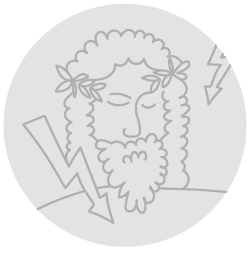Title of the work
Country of the First Edition
Country/countries of popularity
Original Language
Country of the Recording of the Story for the Database
Full Date of the Recording of the Story for the Databasey
More Details of the Recording of the Story for the Database
Genre
Myths
Target Audience
Crossover
Cover

We are still trying to obtain permission for posting the original cover.
Author of the Entry:
Eleanor A. Dasi, University of Yaoundé 1, wandasi5@yahoo.com
Peer-reviewer of the Entry:
Daniel A. Nkemleke, University of Yaoundé 1, nkemlekedan@yahoo.com
Emmanuel Ambe Ndonwi, zambe4@yahoo.com
Elizabeth Hale, University of New England, ehale@une.edu.au
Karolina Anna Kulpa, University of Warsaw, k.kulpa@al.uw.edu.pl

Jean Njome Epole (Storyteller)
Age of narrator: 74 (in 2019)
Social status: common man
Profession: Farmer
Language of narration: mka’a (Bakaka)
Bio prepared by Eleanor A. Dasi, University of Yaoundé, wandasi5@yahoo.com
Origin/Cultural Background/Dating
Cultural Background*: The Mkaa or Bakaka speaking population of the Littoral Region of Cameroon, occupy the Mungo Division, named after the River Mungo. They share the cultural practice of the Wouri people (also a riverine people). Their main music is makossa, generally sung in Douala and their main dances are essèwè and bolobo. The Mka’a people’s attires are saja and kaba, the Sawa people’s regalia. Like other Sawa people, the Mka’a celebrate the Ngondo cultural festival, which brings all the coastal peoples together for initiations, ancestral worships of the spirits of the River Wouri (Mengu or Jengu), for protection, wrestling skills and beauty.
Occasion: Staged
* Source: interview with the narrator.
Summary
A long time ago, there existed a sacred rock called “Ellah” in a village known as Nkonjnine, situated in the Mungo sub division. This sacred rock served as a shield against all invasions in the village. Whenever there was any danger, custodians of the rock would mobilize the population to take refuge in the rock. In such circumstances, the rock opened up for the villagers to enter and later closed after everybody was in. The rock could expand to contain more people as the need arises. From inside, the outside could be seen but the inside could not be seen from outside.
Meanwhile, there was a law that prohibited any villager from blackmailing a fellow villager. In case of such violation, the rock will lose its protective power. One day, a man named Epagma blackmailed his brother’s wife under pretext that she was a source of ill-omen to the village. This was simply because she was not from that village. She came from a neighboring village to marry his brother. When the custodians of tradition heard of the blackmail, they felt disappointed and ostracized Epagma, who went and started the Mbo clan, which was constantly being molested by invaders. But then, the damage had been done and the custodians of the secret of the rock were ripped of their power to hand down the secrets. As time went by, the custodians of the secret of the rock died one after the other without handing down the secret to anyone. That is how the people lost the protection from the rock. The rock is still standing in its position today but it has become a touristic site and is no longer a protective cave for the Bakaka people.
Analysis
There are many myths around the world featuring stones, rocks and caves. These places are usually abodes of gods, and also serve as sanctuary to people of the community.
However, such mythical places in order to exhibit their mythical value require observing certain restrictions and rules. They often demand virtues like truth, honesty, sincerity etc. when these virtues are replaced with vice, the sanctuary is automatically defiled and desecrated. This is what happened with the Ellah, which lost its protective power because someone was blackmailed.
The myth therefore accentuates the need to practice and uphold the above virtues and obey laws, as a condition for humans to continue benefiting from divine and supernatural protection.
The motif of a cave shelter in the rocks, large enough to contain an entire population is also present in the myth entitled The Origin of “Efiehnstemseh,” the Great Cave of Drums in Kedjom (accessed: January 4, 2021).
Further Reading
The Origin of “Efiehnstemseh,” the Great Cave of Drums in Kedjom (accessed: January 4, 2021).
Addenda
Method of data collection: Tape recording and note taking
Researcher: Eleanor A. Dasi
Assistant researcher/Translator: Bekono Nama Julienne Susie


